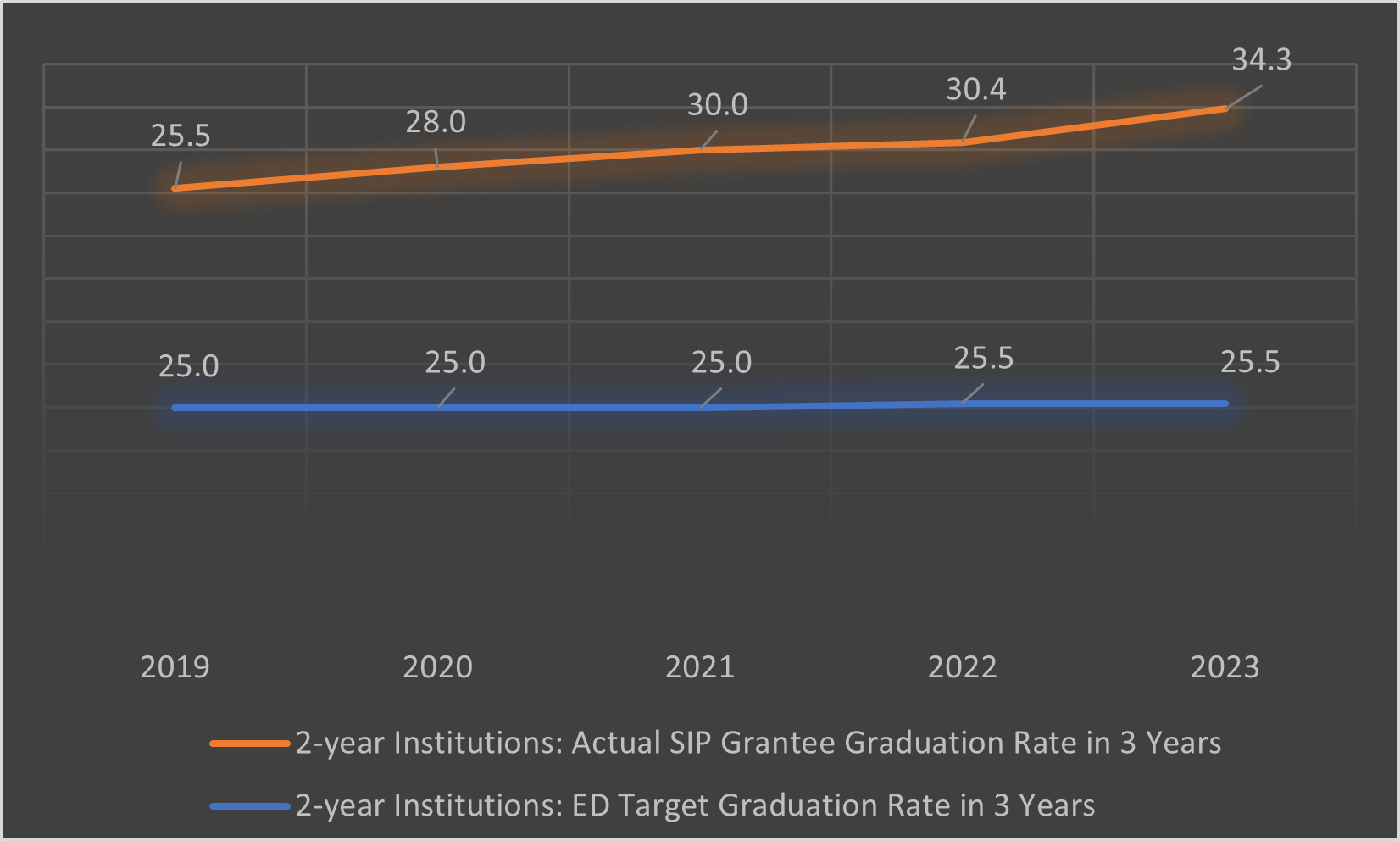Click Here to Support SIP
The Strengthening Institutions Program (SIP) was enacted in the Higher Education Act of 1965 under title III-A. For 60 years, SIP has provided direct funding to colleges to support the financial stability and academic quality of institutions of higher education. To qualify, at least 50 percent of the institution's enrolled students must receive need-based federal aid or the institution must enroll more Pell Grant recipients than the median for the same type of institution; for community colleges that is 44 percent. With SIP funds, colleges are able to support five year projects that allow them to build and sustain operational changes that ultimately help them perform better and become more sustainable.
In the last 5 years for which there are available data, SIP provided 273 institutions with nearly $600 million. Those colleges include 136 public two-year schools in 31 states that have received nearly $300 million in funds to support projects that aim to improve retention, increase completion rates, and connect programs to high-demand careers. As the figure below shows, in the past five years, two-year institutions have been able to leverage SIP funding to surpass the 25 percent graduation rate target and a achieve nearly a 35 percent graduation rate.
However, both House and Senate appropriators are aiming to reduce federal funding for SIP by $5 million for fiscal year 2026. This would be in addition to the $5 million cut SIP endured in the fiscal year 2024 appropriations cycle. Meanwhile, the Trump administration has requested the total funding elimination for this program.
